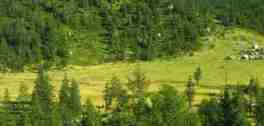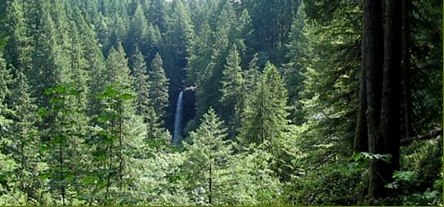FORESTRY & NEPA ANALYSES
|
SEC’s forestry staff has in excess of 125 years of combined experience, with emphasis on inventory, management plan preparation and operations throughout the U.S. In the constantly evolving discipline of forestry, the wealth of experience is supported by our Geographic Information System (GIS) mapping technology, Geographic Positioning System (GPS) equipment, the latest modeling software, cutting edge research and development breakthroughs and our international contacts with leaders in the field. Annual continuing education keeps our state licensed and nationally certified foresters updated on the most advanced and efficient methods of performing our tasks.
|
SEC’s focus is to enhance the ecological capital of the sites we work with recognizing that it is imperative to create sustainable stewardship of these resources for the benefit of future generations and the local communities in which they will live. SEC’s objective of providing the highest quality and most cost effective products for our clients includes our ability to utilize the long standing relationships we have with outside experts and associates when appropriate.
Learn More About Our Forestry Services Below

Natural Resource Planning: SEC’s specialists can develop Strategic Plans on a broad scope, landscape-scale to demonstrate the development of assets over a period as long as 100 years. Tactical Plans can also be developed to identify a point of action to preserve and sustain valuable assets and develop a details short term progressive plan. The management of wildlife populations for various purposes, including diversity and big game hunting is the primary objective of many landowners. Wildlife Habitat Planning includes the development of wildlife preservation and development as an integral part of timber management plans. Professional stakeholder facilitation and collaboration including conducting meetings with a variety of public groups is needed to insure that sustainable resource operations can go forward successfully.

Environmental Management: A significant portion of SEC’s projects require expertise in Environmental Assessments (EAs) and Environmental Impact Statements (EISs). These services require the identification, evaluation, and mitigation of a proposed project or activity. SEC’s team also performs county-wide Wildfire Risk Assessments and Prevention Action including fire risk assessment through fuel load and surface fire and crown fire likelihood, with recommendations for protection. SEC can also evaluate activities on the forest to determine if those actions are in compliance with applicable Best Management Practice (BMPs). Additionally, SEC performs Insect Assessment and recommends solutions for Disease Prevention.

Forest Operations: SEC’s forestry department works with our engineers and surveyors to provide property access, boundary location and drainage design to meet management and operational needs. SEC can help minimize environmental impacts, develop access and maintenance for timber or hunting activity. SEC’s licensed and professionally registered foresters can also perform operations analysis including the equipment evaluation and system selection recommendation based on efficiency, consideration of timber and terrain characteristics and engineering operations such as landing locations, skyline payload analysis, and skid trail locations. Many areas of the country have limited markets for small material forest products; SEC’s staff can perform feasibility studies to determine the most cost effective disposal or use of this material, especially for non-traditional biomass production. SEC’s team can also recommend production safety programs in order to assist operators in improving loss control.

Silvicultural Services: SEC’s silviculture specialists can perform stand examinations to evaluate the vegetative composition, structure, and productivity in an ecological framework. We then develop site specific resource plans at varying levels of data intensities and measurement resolutions with statistical reliability; conduct forest inventories including measurement of soils, understory vegetation, physiological tree attributes, quality, regeneration, sustainability, operability, mortality, growth, and other parameters for the purposes of developing sustainable management plans; recommend treatment prescriptions to determine management operations required to achieve desired future forest conditions; develop timberland management plans to maintain the ecological capital for future sustainability; and pursue ecological restoration for the recovery of an ecosystem due to past practices and lack of management.
